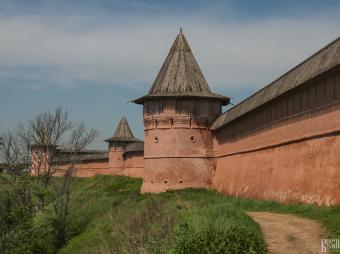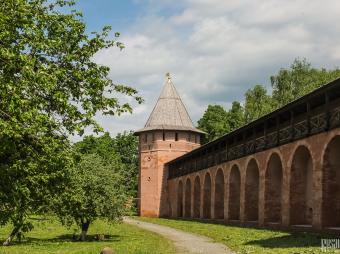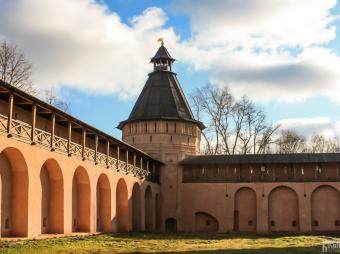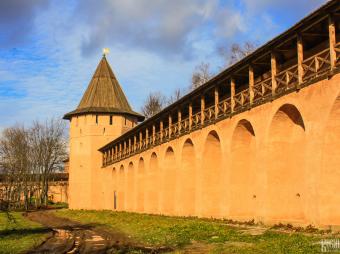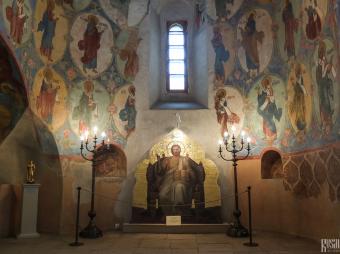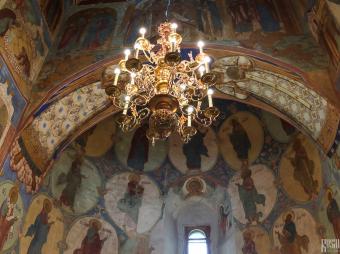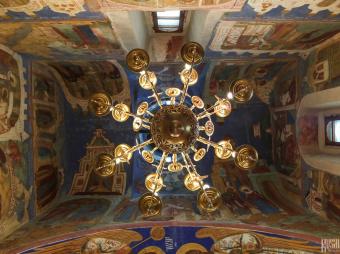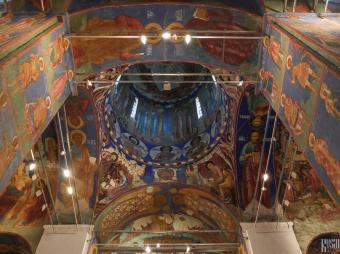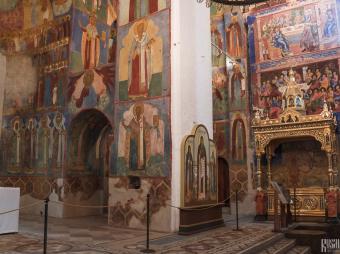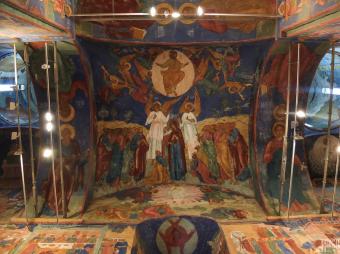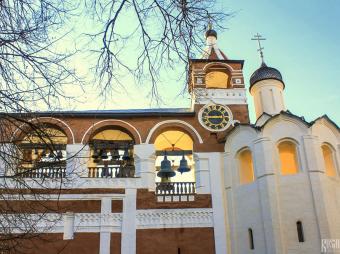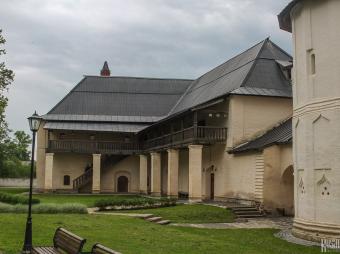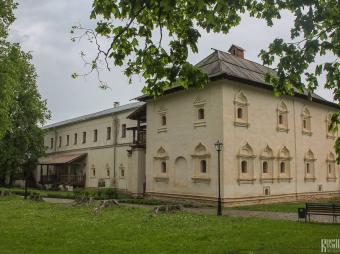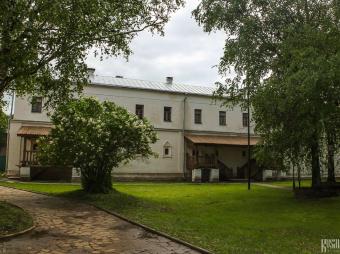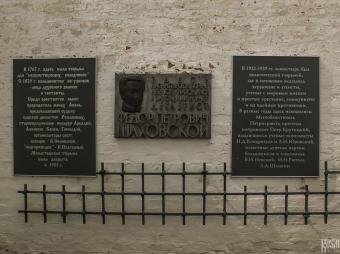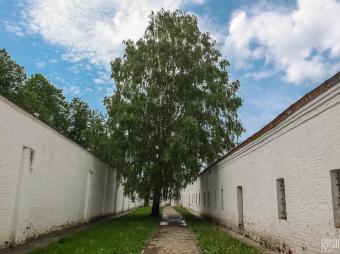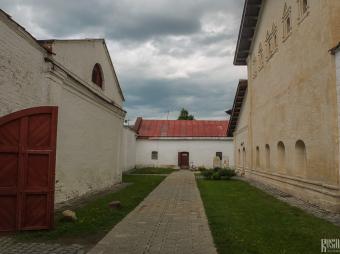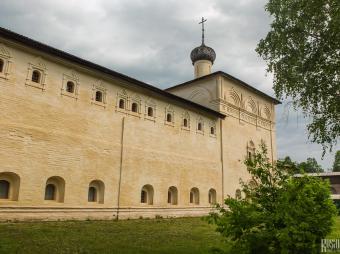Around Ulitsa Lenina
Spaso-Yevfimiev Monastery

The biggest monastery in Suzdal is the Spaso-Yevfimiev Monastery, which is occasionally mistaken for the Suzdal Kremlin due to its large fortified walls. The monastery was founded in 1352 by Prince Boris Konstantinovich of Suzdal-Nizhny Novgorod, originally as a fortification. Originally the monastery was called the Spassky Monastery but was later renamed the Spaso-Yevfimiev Monastery in honour of St Euthymius (Yevfimi) of Suzdal, who was sent by Prince Boris Konstantinovich to Suzdal to found the monastery. The monastery was closed after the Revolution and briefly used to imprison political prisoners. In 1968 it was transferred to the Vladimir-Suzdal Museum-Reserve, which still owns the monastery today. In 1992 the monastery was added to the UNESCO World Heritage as part of the White Monuments of Vladimir and Suzdal.
Walls and Entrance Tower

Originally most of the monastery's buildings were made out of wood and its replacement stone buildings date from between the 16th and 17th centuries. Its impressive stone walls were erected in the second half of the 17th century. The walls have 12 towers including the 22-metre high Entrance Tower. The main entrance to the museum is here and you need to buy a ticket to enter. You also need to buy your tickets for the exhibitions inside here too.
Annunciation Gate-Church
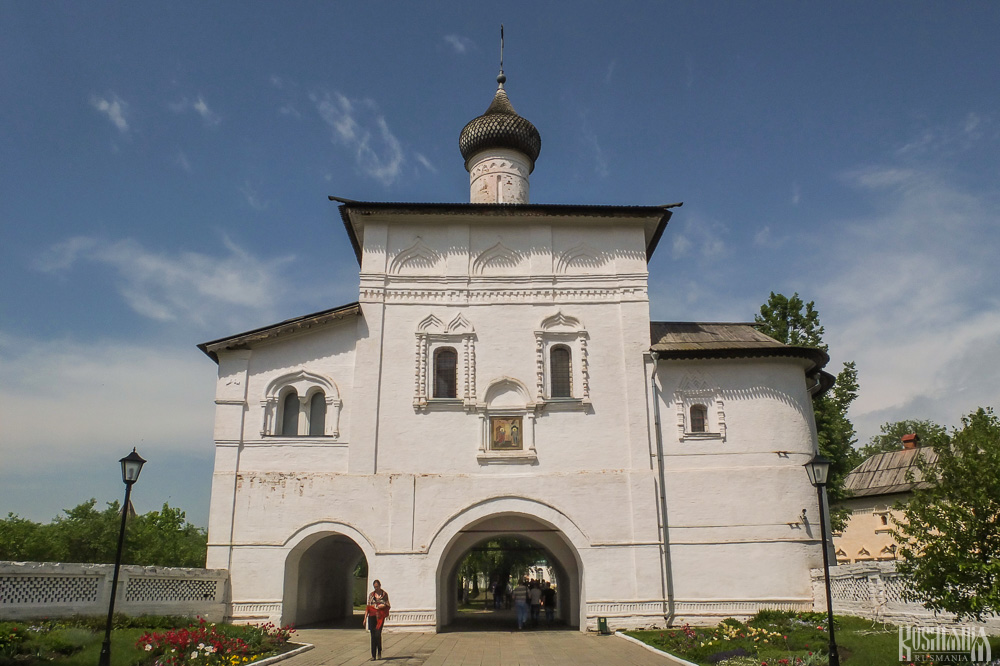
Just beyond the Entrance Tower is the Annunciation Gate-Church which dates from at least 1628 and incorporates part of an earlier gateway from the 15th century. The Annunciation Gate-Church now holds an exhibition on Prince Dmitri Pozharsky.
Transfiguration of the Saviour Cathedral and Belfry
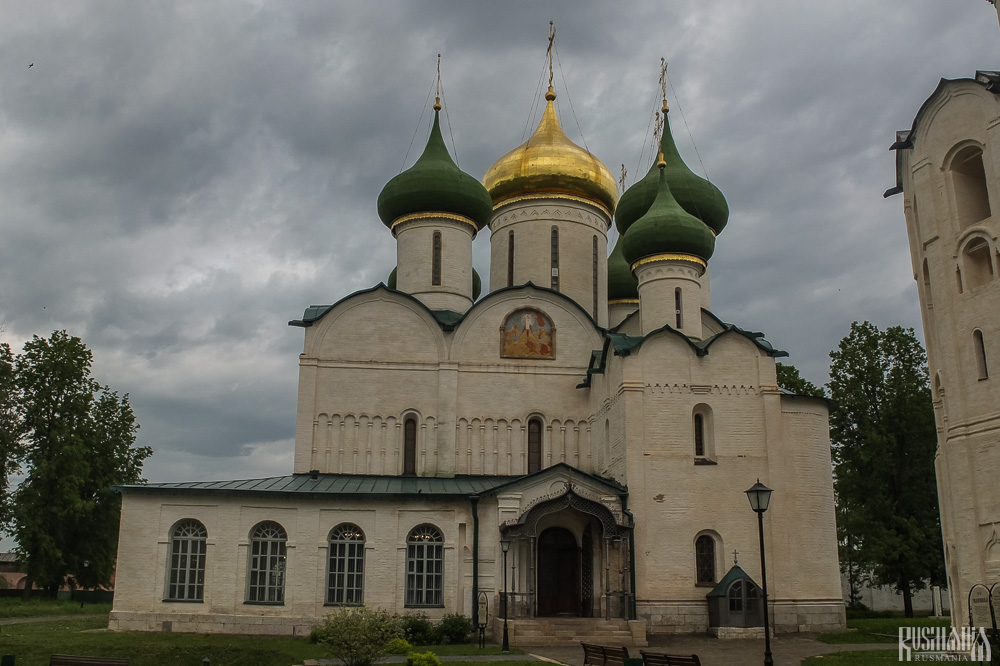
The dominant building within the centre of the monastery is the magnificent Transfiguration of the Saviour Cathedral. The cathedral actually started its life as a small church which was built between 1507 and 1511 over the tomb of St Euthymius of Suzdal. This original part has survived as a side chapel on the main part of the cathedral which was completed in 1594. The cathedral's interior was decorated with frescos by Guri Nikitin in the 17th century, which have survived to this day and can be viewed by buying a ticket to the cathedral.
In front of the Transfiguration of the Saviour Cathedral is St John the Baptist's Church and Belfry. The church is the oldest part of the ensemble dating from the first quarter of the 16th century, the rectangle belfry was built on at the end of the century. Currently the belfry holds 17 bells.
Archimandrite's Chambers and Monks' Quarters
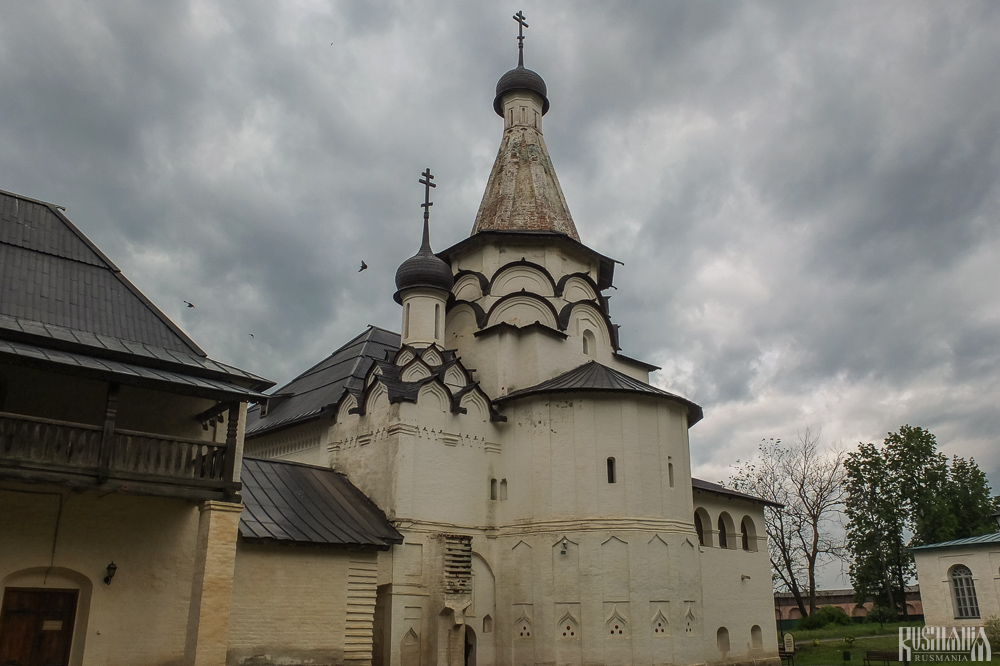
In the centre of the monastery in front of the Transfiguration Cathedral are former administrative and residential buildings which today are used to hold exhibitions of the Museum-Reserve. The beautiful 16th-century Dormition Refectory Church holds the Museum of Naïve Art which was opened in 2006. The neighbouring Archimandrite's Chambers has two exhibitions: one entitled 'Russian Icons from the 13th to 20th Centuries' and one entitled 'Books from the Last Six Centuries'.
The long building of the Monks' Quarters hold two exhibits: the Restoration Museum which explains the history of Suzdal's monasteries and the restoration work carried out in the city, and an exhibit entitled 'Intertwined Fates' which details the imprisonment of Italian POWs at the monastery and the work of Tonino Guerra and Andrey Tarkovsky
Dmitri Pozharsky Memorial-Chapel
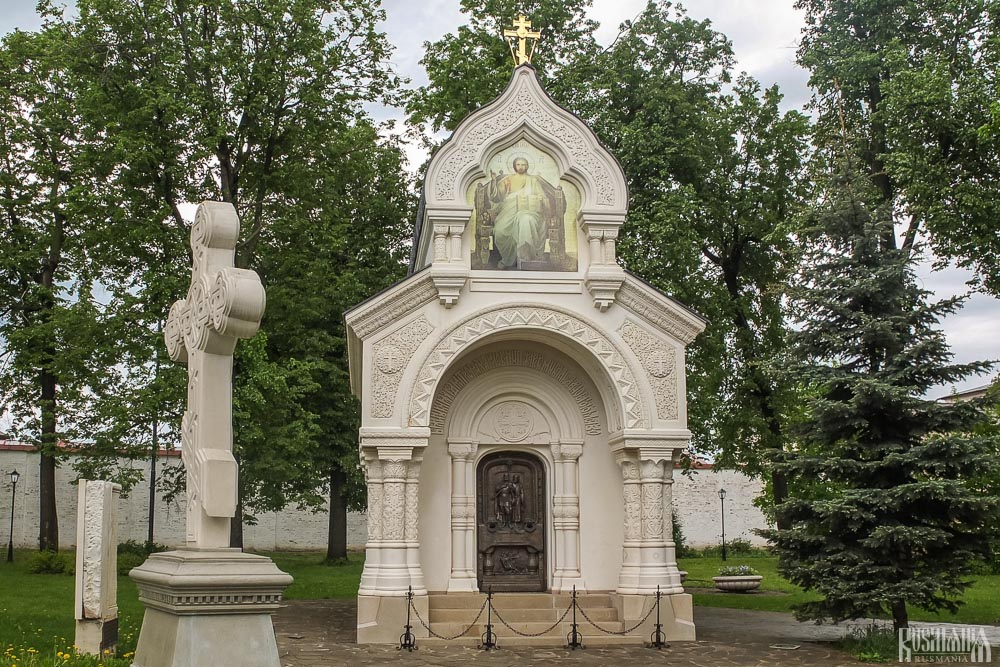
Just behind the Monks' Quaters, next to the Transfiguration Cathedral, is the Dmitri Pozharsky Memorial-Chapel. Prince Dmitri Pozharsky, one of the main heroes of the Time of Troubles, was buried in the monastery in 1642 in the Pozharsky family crypt. However his tomb was destroyed by the Bolsheviks in 1933 when the monastery was used as a prison for political prisoners. A cross was erected over the site when the monastery was restored in the 1960s upon its transfer to the Vladimir-Suzdal Museum-Reserve and in 2009 the memorial-chapel was unveiled by President Dmitri Medvedev.
St Nicholas' Hospital Church and Prison Block
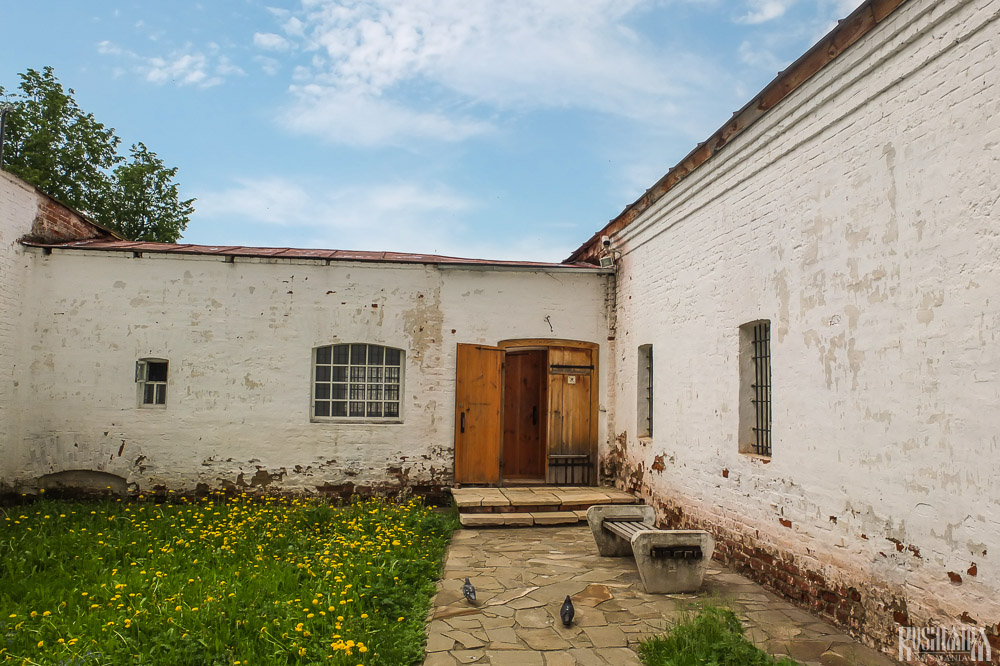
The 'Golden Storeroom' exhibition was opened in 2006 in St Nicholas' Hospital Church and displays items of applied art and church utensils. Next to the church is the monastery's former Prison Block which was established by Catherine the Great in 1766 and used right up until 1967. The Prison Block now holds the 'Suzal Prison' exhibition detailing the Tsarist and then the Soviet era of the prison.
Apothecary's Garden
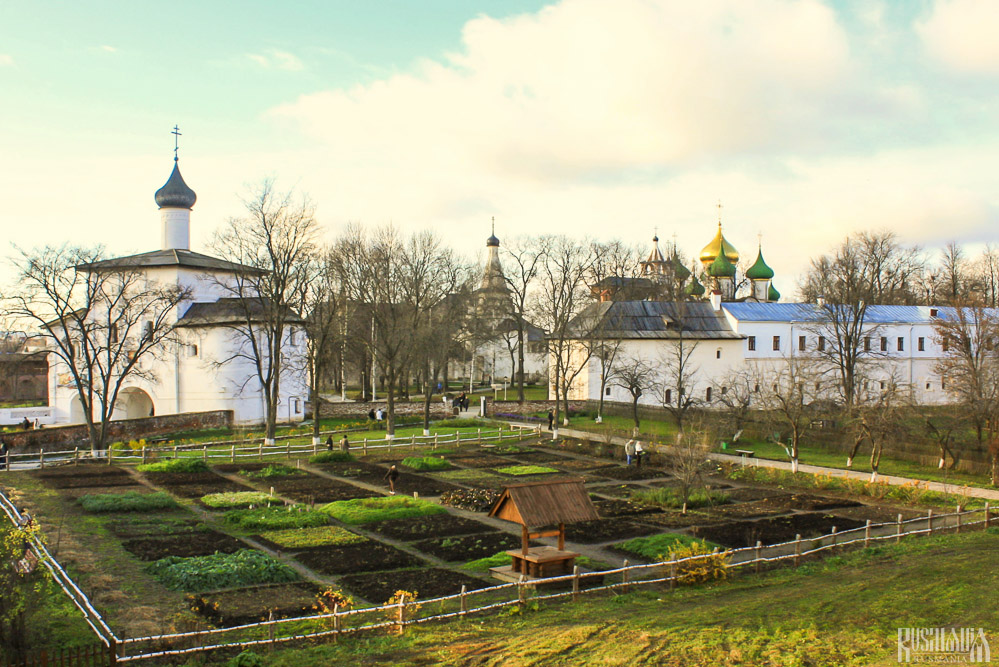
The eastern part of the grounds of the monastery is taken up by the Apothecary's Garden which was set up in the mid-17th century on the orders of Tsar Alexis to grow medical herbs for use by the royal family and the army.
| Location | Ulitsa Lenina |
|---|---|
| Website | http://www.vladmuseum.ru |
| Clock | 10:00 - 18:00. Closed on Mondays and the last Thursday of the month. |

 History
History